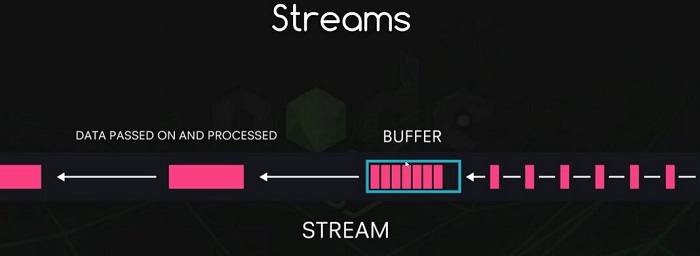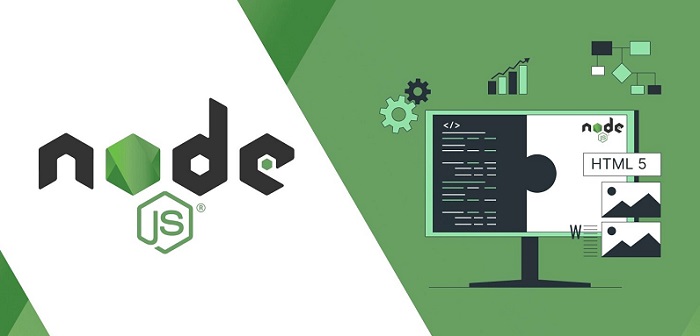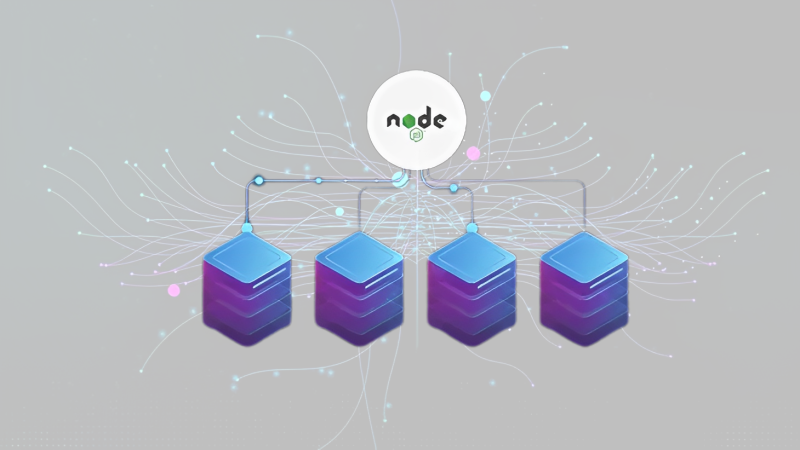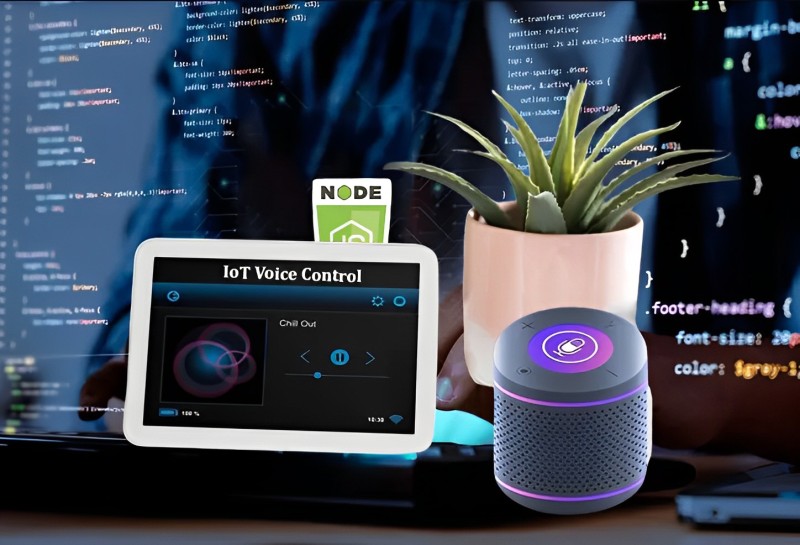Understanding Real-Time Data Streaming with Node.js
Instead of waiting for the complete information to be put into memory, real-time data streaming with Node.js entails processing data in chunks as it becomes available. In order to extract meaning and insight, real-time data streaming entails gathering and ingesting a series of data from several sources and processing that in real-time.
When working with big files, network data, or real-time data sources, this method is quite helpful. A robust suite of streaming APIs enables developers of Node.js Development Company to manage streaming data effectively. In order to extract meaning and insight, real-time data streaming with Node.js entails gathering and ingesting a series of data from several data sources to process in real-time.

Log files created by users of your web or mobile applications, player activity in-game, data from social networks, financial trading floors, and geospatial services are a few examples of streaming data. Instead of waiting hours, days, or weeks for responses, real-time data streaming with Node.js allows you to examine and handle data instantly.
Important Instances of Real-Time Data Streaming with Node.js
- Low Latency: It is the minimum time lag between the creation and processing of data.
- High Throughput: The capacity to effectively manage substantial amounts of data.
- Scalability: The ability to easily handle growing data loads.
- Fault Tolerance: By identifying, controlling, and recovering from faults without interfering with operations, fault tolerance in real-time data streaming with Node.js guarantees smooth data flow.
What makes Node.js the best option for Real-Time Applications?
It is anticipated that real-time applications will be incredibly quick and scalable. Therefore, only the best and most advanced technology ought to be employed. Here, making a compromise means disappointing both you and your potential clients. Because of the architectural benefits and Node.js design patterns that complement real-time system needs, Node.js is frequently regarded as the ideal choice for real-time applications.
Key Technologies and Tools
- WebSockets: A protocol allowing full-duplex channels of communication via a single TCP connection is called WebSockets. Implementing WebSocket is made easier by libraries such as socket.io.
- Stream API: To manage data streams, Node.js comes with an integrated stream module.
- Message Brokers: Distributed real-time streaming is made possible by programs like Redis Pub/Sub, RabbitMQ, and Apache Kafka.
- Database Integration: Real-time data may be effectively synced with databases such as MongoDB or Firebase authentication in Node.js.
- GraphQL Subscriptions: Enable real-time API updates for contemporary apps. Apollo Server with subscriptions is one of the tools.
Common Use Cases for Real-Time Data Streaming with Node.js
- Applications for Live Chat: Providing real-time delivery and reception alerts to messaging systems.
- Collaborative Tools: Making it possible to edit and update documents in real-time in programs like Google Docs.
- Social Media Monitoring: Monitoring social media is keeping tabs on and examining attitudes, hashtags, and mentions on several social media sites. Developers may create streaming apps that instantly compile and analyze social media data using Node.js.
- Internet of Things Systems: Sending sensor data from gadgets to centralized platforms for analytics and monitoring.
- Dashboards for the Stock Market: Offering real-time information on trading activity and stock prices.
- Gaming: Provide smooth live video and audio broadcasting or make multiplayer game interactions easier.
Implementing Real-Time Data Streaming with Node.js
Step 1: Setting up the Project
First, initialize a new Node.js project:
mkdir real-time-streaming
cd real-time-streaming
npm init -y
Install the required dependencies:
npm install express socket.io
Step 2: Creating the Server
Now create a file named server.js and with the help of WebSocket support set up an Express server wit socket.io and http package :
const app = express();
const server = http.createServer(app);
const io = new Server(server);
// Serve static files
app.use(express.static('public'));
io.on('connection', (socket) => {
console.log('A user connected');
// Broadcast messages to all clients
socket.on('text', (msg) => {
io.emit('text', msg);
});
socket.on('disconnect', () => {
console.log('A user disconnected');
});
});
server.listen(3000, () => {
console.log('Server is running on http://localhost:3000');
});
Advanced Features and Enhancements of Data Streaming with Node.js
1. Improved Streams API
Node.js has made improvements to its Streams API to handle data pipelines more effectively. One such improvement is sophisticated backpressure management, which guarantees smooth data flow without taxing the system.
2. Async Stream-Based Iterators
Async iterators, which were first introduced in contemporary Node.js, enable programmers to handle streams using for-await-of loops, improving the readability and intuitiveness of code.
3. Enhancements to WebSocket and SSE
Server-Sent Events (SSE) offer effective unidirectional streaming, while libraries such as Socket.io allow reliable real-time communication.
4. Worker Threads
Worker Threads provide multi-threaded processing for CPU-intensive tasks while streaming without preventing the event loop from being blocked.
5. Scalability with Clustering
Real-time streaming applications may take use of multi-core processors thanks to built-in clustering, which increases throughput and scalability.
6. Real-Time Compression
Large data streams are optimized for effective transport using native support for compression (such as zlib).
7. Better Debugging Tools
To ensure steady and effective performance, Node.js now comes with improved debugging and monitoring tools for real-time applications.
Why Node.js Stands Out for Data Streaming

Unified JavaScript Development
Building and maintaining real-time data streaming apps is made simpler by using JavaScript on both the server and client sides, which also optimizes development workflows and lessens the cognitive strain on developers.
Vast Ecosystem
Libraries and tools for simple and effective data streaming, such socket.io, streams API, and event-driven programming paradigms, are part of the Node.js ecosystem.
Scalability
Applications may grow horizontally rapidly with Node.js lightweight core and asynchronous event-driven design, supporting additional connections without appreciably increasing hardware resources.
Conclusion
Node.js provides a versatile set of streaming APIs that enable efficient handling of streaming data. By using readable, writable, transform, and piping streams, NodeJS Developers can process large datasets, handle network communication, and perform real-time data processing tasks with ease. Leveraging data streaming with Node.js capabilities is essential for building scalable, performant, and memory-efficient applications.
Read more:



